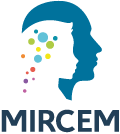List, inform
advise, propose
OPSOCLONUS-MYOCLONUS SYNDROME
Causes of disease
Among the causes, neuroblastoma, one of the most frequent tumours in children, is found in 40% of cases and in the other situations, infections have been found according to the clinical history or patient living place (cytomegalovirus, Epstein–Barr virus, varicella-zoster virus, Human Herpesvirus – 6, adenoviruses, enterovirus, influenza virus, West Nile virus, HIV-1, dengue fever, chikungunya, mycoplasma pneumonia, borrelia, salmonella and streptococcus).
Clinical manifestations
Opsoclonus-myoclonus syndrome (OMS) is a syndrome characterized by the presence of 3 of the following 4 signs:
– Opsoclonus: abnormal, uncontrolled eye movements.
– Ataxia: gait and/or balance disorders
– Behavioural and/or sleep disorders
– Presence of neuroblastoma
In some cases, ataxia may begin on its own and other symptoms may appear gradually.
Evidence of the disease
Among the various explorations, the search for neuroblastoma will be the priority: thoraco-abdominopelvic scan or whole body MRI depending on the experience of each team.
LCR is abnormal in 14% of cases. The oligo-clonal bands are often present.
Cerebral MRI at the onset of the disease is normal and cerebellar atrophy may be noted as the disease progresses.
Evolution
The tumor prognosis of SOM is good contrary to neurological evolution. Learning disorders are reported in more than 50% of cases depending on the series.
Treatment
The treatment is primarily the treatment of the tumor if it is present, associated with a specific treatment of SOM involving corticosteroid bolus (dexamethasone). In case of failure, the treatments proposed in the European trial are a combination of corticosteroid bolus – cyclophosphamide injection and corticosteroid bolus in the second line – rituximab injection in the third line.








